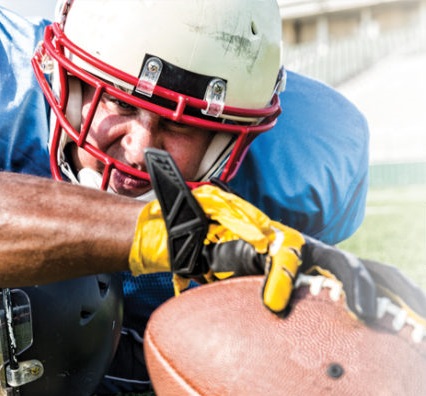
By John R. Mishock, PT, DPT, DC
Recently Ben Roethlisberger, quarterback for the Pittsburgh Steelers, sustained an ulnar collateral ligament tear and subsequent surgery, ending his football season. Elbow injuries in football players are uncommon with 92% of the injuries being traumatic (contusions and dislocations), (Ortho J Sports Med 2019). Ulnar collateral ligament injuries in football quarterbacks are even more uncommon. In my book, “The Rubber Arm, Using Science to Increase Pitch Control, Improved Velocity, and Prevent Elbow and Shoulder Injuries”, I site a study of elbow injuries in quarterbacks from NFL’s injury surveillance system from 1994-2008. In that time period, with over 7,168 games played, only one quarterback required Tommy John surgery (surgery to repair the ulnar collateral ligament of the elbow), (Journal of Shoulder and Elbow Surgery, 2010).
Contrast the football quarterback with a baseball pitcher, Tommy John surgery has become so widespread that it is often referred to as reaching “epidemic” levels in baseball players. In Major League Baseball (MLB), from 2010-2016 the days spent on the disabled list from elbow related injuries went up from 5,000 to 8,000 per year. Of those who had the surgery last year 35% were having the surgery for the second time. (The Hardball Times, 2015). Even having the surgery does not guarantee long term success. Following Tommy John surgery, 77% of MLB players return to professional baseball, however, only 55% return to their same level of function. (Ortho J Sports med, 2019). Even in young baseball players (9-13 year of age) there is a 50% chance of experiencing elbow pain in a given season. (American Journal of Sports Medicine, 2011)
There may be many reasons for the reduced risk of elbow injuries in quarterbacks vs baseball pitchers, however, the leading reason is the biomechanics of the throw regarding the wrist/forearm position. A football is thrown with a neutral position of the forearm. This position has been shown to have decreased tensile stress on the ulnar collateral ligament. Conversely, the baseball fastball is thrown in the forearm supinated position which places significant stress on the elbow. This is also why research has shown the baseball curve ball produces less stress on the elbow than the fastball.
Now, how did Ben Roethlisberger injure his elbow? When you watch the video you can clearly see that he dropped his throwing pocket down to avoid the defensive rush causing a side arm release. The side arm release also produces greater stress on the elbow.
We can help!
Relieve pain and increase function.
Call for a FREE Phone Consultation, or to schedule your appointment today 610-327-2600, at one of our 6 convenient locations in Skippack, Gilbertsville*, Barto, Phoenixville*, Pottstown, and Limerick* (inside the Spring Valley YMCA).
Hours: 7:00am to 8:00pm, ALL locations, most days!
*Saturday Hours
Visit our website at www.mishock.wpengine.com.
Dr. Mishock is one of only a few clinicians with doctorate level degrees in both physical therapy and chiropractic in the state of Pennsylvania.
 He has authored two books; “The Rubber Arm, Using Science to Increase Pitch Control, Improved Velocity, and Prevent Elbow and Shoulder Injuries” and “Fundamental Training Principles: Essential Knowledge for Building the Elite Athlete.” Found at our clinics or on Amazon. https://www.amazon.com/Rubber-Arm-Increase-Velocity-Shoulder/dp/1483465071/ref=sr_1_1?keywords=rubber+arm%2C+john+mishock&qid=1569373364&s=books&sr=1-1
He has authored two books; “The Rubber Arm, Using Science to Increase Pitch Control, Improved Velocity, and Prevent Elbow and Shoulder Injuries” and “Fundamental Training Principles: Essential Knowledge for Building the Elite Athlete.” Found at our clinics or on Amazon. https://www.amazon.com/Rubber-Arm-Increase-Velocity-Shoulder/dp/1483465071/ref=sr_1_1?keywords=rubber+arm%2C+john+mishock&qid=1569373364&s=books&sr=1-1
